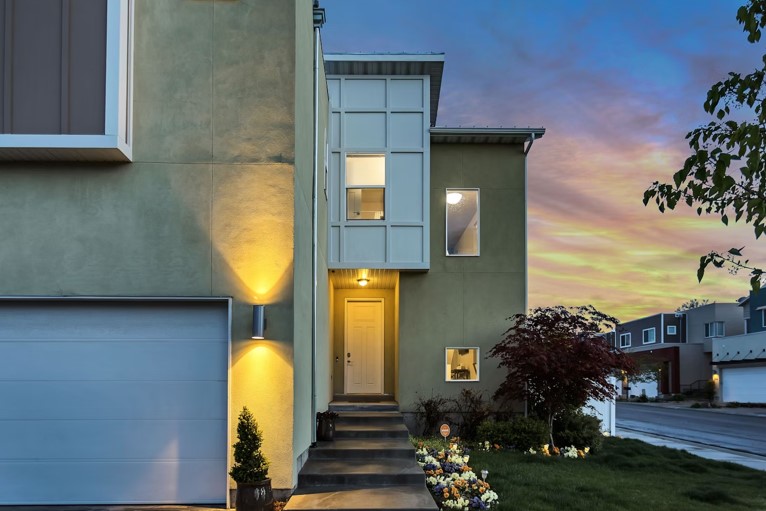Roofing issues can be a major headache for homeowners, often leading to significant damage if not addressed promptly and effectively. Whether you're dealing with leaks, damaged shingles, or structural concerns, understanding how to tackle these problems can save you time, money, and stress. By following practical tips and working with professionals, you can ensure your roof remains in good condition and your home stays protected.
1. Regularly Inspect Your Roof for Early Signs of Damage
The first step in dealing with common roofing issues is to conduct regular inspections. Many problems, such as leaks or missing shingles, can be detected early with a thorough visual check. Start by examining the roof from the ground, looking for any noticeable damage, such as cracked or curled shingles, sagging areas, or discolored spots that could indicate water damage.
If you're comfortable climbing a ladder, inspect the roof more closely. Pay particular attention to areas around chimneys, skylights, and vents, as these are common sources of leaks. Don’t forget to check the gutters for granules, which can be a sign that your shingles are deteriorating.
2. Address Leaks Immediately to Prevent Further Damage
Leaks are among the most common and potentially destructive roofing issues. Even a small leak can lead to significant damage if left unchecked. The moment you notice water stains on your ceiling or walls, it's crucial to take immediate action. Trace the leak's source, which may not be directly above the water stain, as water can travel along beams and surfaces before dripping down.
Once you've identified the source, patch the leak as a temporary fix and contact a professional roofer for a permanent solution. Ignoring leaks can lead to mold growth, weakened structural components, and even damage to your home's foundation. For instance, at IAmRoofing.com, experts emphasize the importance of addressing leaks as soon as they’re discovered. This way, they intend to avoid more extensive repairs down the line.
3. Replace Damaged Shingles Promptly
Shingles are your roof's first line of defense against the elements, and damaged or missing shingles can leave your home vulnerable to water infiltration, wind damage, and other issues. Whenever you notice shingles that are cracked, curled, or missing, it's important to replace them promptly.
When replacing shingles, make sure to use high-quality materials that match the existing roof. Proper installation is key, as poorly installed shingles can fail prematurely, leading to further problems. In some cases, if the damage is widespread, it might be more cost-effective to consider a partial or full roof replacement. Regular maintenance and prompt repairs can significantly extend the life of your roof, ensuring it provides adequate protection for years to come.
4. Keep Your Gutters Clean and Functional
Clogged gutters are a common cause of roofing issues, particularly when it comes to leaks and water damage. When gutters become blocked with leaves, twigs, and debris, water can overflow and seep into the roof’s structure, leading to rot, mold, and other serious problems.
To prevent this, it's essential to clean your gutters regularly, especially during the fall when leaves are more likely to accumulate. Installing gutter guards can also help reduce the amount of debris that enters the system, making maintenance easier. Additionally, ensure that your downspouts are directing water away from the foundation of your home to prevent any potential flooding or structural issues.
5. Ensure Proper Ventilation to Extend Roof Life
Proper ventilation is critical to the health and longevity of your roof. Without adequate airflow, heat and moisture can build up in your attic, leading to a host of problems, including mold growth, warped shingles, and reduced energy efficiency.
Make sure your attic has the right balance of intake and exhaust vents to allow for continuous airflow. If you notice signs of poor ventilation, such as excessive heat in your attic, ice dams in winter, or a musty odor, it’s time to assess your ventilation system.
6. Be Proactive with Snow and Ice Removal in Winter
Winter can be particularly harsh on roofs, especially in regions prone to heavy snowfall and ice accumulation. Snow and ice can add significant weight to your roof, leading to potential structural damage. Additionally, ice dams—ridges of ice that form at the edge of a roof—can trap melting snow, causing water to back up and leak into your home.
To prevent these issues, be proactive about snow and ice removal. Use a roof rake to safely remove snow from the edges of your roof after a heavy snowfall, and consider installing heat cables in areas prone to ice dams. However, avoid climbing onto the roof yourself, as it can be dangerous.
Dealing with common roofing issues doesn’t have to be overwhelming if you follow these practical tips. By regularly inspecting your roof, addressing leaks and damage promptly, and maintaining proper ventilation and gutters, you can prevent many problems before they start. Being proactive about snow and ice removal in winter and scheduling regular professional inspections can also help extend the life of your roof, ensuring your home remains safe and secure. Taking these steps will not only save you money but also provide peace of mind knowing your roof is in the best possible condition.










